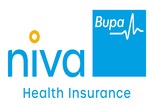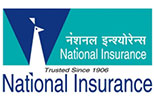Major Differences Between Riders and Add-On Covers in Health Insurance

Health insurance is your safety net. But what if you want more? That’s where riders and add-on covers step in. They help you get extra support when you need it most. But most people don’t know the difference between the two. They often mix them up, which leads to gaps in coverage or wastage of money.
So, it’s important to know what you’re paying for and what you’re getting in return. Here, you will learn about health insurance riders and add-ons and the key differences between them.
Key Highlights
- Riders and add-ons personalize your health plan for life events like marriage, parenthood, or aging.
- Insurance rider is a cost-effective tool for long-term risks like critical illness or accidents.
- Health insurance add-ons offer short-term benefits such as OPD, maternity, or hospital cash allowance.
- A balanced mix of riders and add-ons ensures strong, tailored coverage without wasting money.
Table of Contents
What’s a Rider in Health Insurance?
A rider in health insurance is an extra benefit you add to your main health insurance policy. It gives you more coverage without buying a new plan in return for an additional premium. For example, cancer rider insurance can help cover cancer treatment costs, even if your main policy doesn’t include it.
Today, insurance providers offer several riders in the market. Here are some common ones:
- Critical Illness Rider: Pays a lump sum when you’re diagnosed with a serious illness like a heart attack, stroke, or kidney failure.
- Accidental Death Rider: Gives the family a payout when you die in an accident.
- Personal Accident Rider: Covers medical costs and offers compensation for injuries or disability caused by accidents.
- Hospital Cash Rider: Gives a fixed daily amount for each day you’re admitted to the hospital.
- Maternity Rider: Helps cover the cost of pregnancy, delivery, and newborn care.
- Waiver of Premium Rider: Waives future premium payments when you suffer a serious disability or loss of income due to illness or injury.
What’s an add-on cover in health insurance?
A health insurance add-on cover is an extra feature you buy along with your main health insurance plan. It gives you more coverage for specific needs and demands an extra premium.
Let’s say your basic health insurance covers hospital visits but doesn’t pay for maternity expenses. You can buy a maternity health insurance add-on and get more financial support without changing your plan.
Below are some of the popular add-on covers in health insurance:
- Maternity Cover: Covers expenses related to pregnancy, childbirth, and post-delivery care, including hospitalization and newborn care.
- Critical Illness Add-On: Provides a lump sum payout when diagnosed with a major illness like cancer, heart attack, or stroke.
- Hospital Cash Cover: Pays a daily cash amount for each day you are hospitalized, helping with additional expenses like transport or meals.
- Accidental Death and Disability Cover: Offers financial support in case of permanent disability or death due to an accident.
- OPD (Outpatient Department) Cover: Covers costs for doctor consultations, lab tests, and medications that don’t require hospitalization.
- Room Rent Waiver: Removes the cap on room rent during hospitalization, allowing you to choose a better recovery room.
- Global Treatment Cover: Pays for medical treatment abroad when necessary, offering coverage for international health care needs.
What’s the difference between a rider and an add-on cover?
|
Parameter |
Rider |
Add-On Cover |
|
Structure |
Attached directly to the main insurance policy. |
Works as a standalone add-on alongside the policy. |
|
Premium |
Premium is usually lower and added to the base plan. |
Has a separate premium depending on the feature. |
|
Coverage Scope |
Offers coverage for specific events or risks. |
Provides broader or optional coverage like maternity, OPD, etc. |
|
Flexibility |
Limited types available. |
A wide variety of add-ons available. |
|
Purchase Time |
Can only be added at the time of buying or renewing the policy. |
Can sometimes be added during the policy term (based on insurer rules). |
|
Claim Process |
Claims are processed as part of the main policy. |
Claims may be handled separately from the base policy. |
|
Regulation |
Part of IRDAI guidelines for a life/health insurance rider. |
Treated as part of general product features. Less regulation. |
|
Link to Base Sum Insured |
Usually shares the base sum insured or offers fixed benefit payouts. |
May offer separate limits and conditions, independent of base sum insured. |
|
Impact on Policy Structure |
Alters or extends the core policy terms slightly. |
Does not change the structure. Works as a parallel benefit. |
|
Customization Level |
Limited customization options. |
Highly customizable to suit personal and lifestyle needs. |
Check Also:
- Star Health Insurance Plans
- Care Health Insurance Plans
- HDFC Ergo Health Insurance Plans
- ICICI Lombard Health Insurance Plans
Should you choose a rider or an add-on cover?
The right choice between an insurance rider and a health insurance add-on depends on your budget, health needs, and lifestyle. Riders are extra benefits added to a base plan, while add-ons offer more coverage for specific situations. In the end, it’s advisable to go with the one that gives you the best value and protection based on your current stage of life.
Riders and add-ons aren’t ‘extras’. They’re ‘essentials’ tailored to your life. It’s best to think ahead, act smart, and shape your coverage (with riders/add-ons) before life puts you in a medical emergency. After all, the right choice today will protect your health and finances tomorrow.



















































